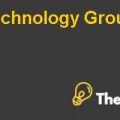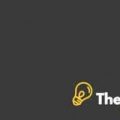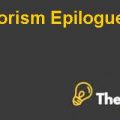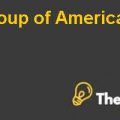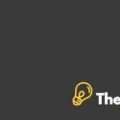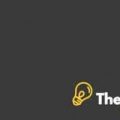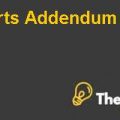View on the Proposals and Likely Decision by Team Monticello Fund
The proposals should be judged on the basis of both the risk and return along with the consideration of correlation. It is because the prime reason of the formation of a portfolio is to diversify the risk in an optimal way to get the highest return from the portfolio.
The first proposal does not consider the risk level at all, so it cannot be considered in the portfolio. The second proposal is a better alternative in relation to the first proposal. However, if Boise Cascade and New York Times appear to have a strong and positive correlation between them; then the risk level can exceed the maximum accepted level of risk.
For this purpose, the third proposal of considering Mylan Labs and Placer Dome will be selected. The fourth proposal cannot be entirely rejected because there is a need to find the optimal level of proportion between the stocks that provide the highest return within the acceptable level of risk.
Darden Capital Management The Monticello Fund Harvard Case Solution & Analysis
Appropriate Measure of Risk
In general, there are five principal risk measures: alpha, beta, r-squared, standard deviation and the Sharpe ratio. For portfolio management, the standard deviation of the stocks describes the level of risk of an individual stock; whereas the correlation measures the inter-dependency between the stocks and normalizes the risk level. The company should use the same risk measure to compare the stocks.
In the CAPM model, the appropriate measure of risk of any asset or portfolio p is given by its "beta."
Superior performance in terms of CAPM can be measured by "alpha," which is the incremental expected return, resulting from managerial information. This can be represented as:
In the CAPM equilibrium, alphas should be zero for an optimal level of risk and return. A portfolio with positive alpha offers an expected return in excess of its equilibrium risk-adjusted level and in this sense it has superior performance.
The Risk Adjusted Return of the Portfolio S&P 500 and the Proposed Actions
The risk adjusted return or the return from S&P 500 can be considered as the market return because it contains a large number of stock; thus all types of market risks are reflected in it.
According to the summary statistics, the return on S&P 500 had been 12.4% with a standard deviation of 20.4%.
By using the raw beta of all the companies that are potential stocks to be included in the portfolio, and the risk free rate on one year T-Bond along with the market return; the expected rate of return for all the companies can be calculated using the CAPM model.
Selection of Stocks for the Fund Monticello
By theory of portfolio and risk measurement, a positive alpha of 1.0 means that the fund has outperformed its benchmark index by 1%. Correspondingly, a similar negative alpha will indicate an underperformance of 1%.
By calculating the alpha of the individual stocks using the calculated return through CAPM and the anticipated annual return since 2004-2007; it is evident that Mylan Labs and Placer Dome have exceeded the expectations whereas, Micron Technologies had highly underperformed.
Stocks that have highest alpha values should be selected to be included in the portfolio. From the selected stocks, Mylan Labs and Placer Dome will be selected for the portfolio. However, it is very important to find the optimal proportion between the stocks to maximize the return at a given level of risk.
This is just a sample partial case solution. Please place the order on the website to order your own originally done case solution.


